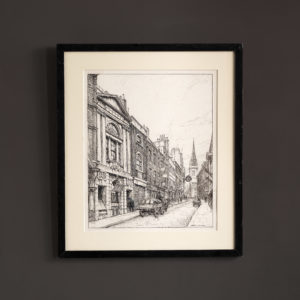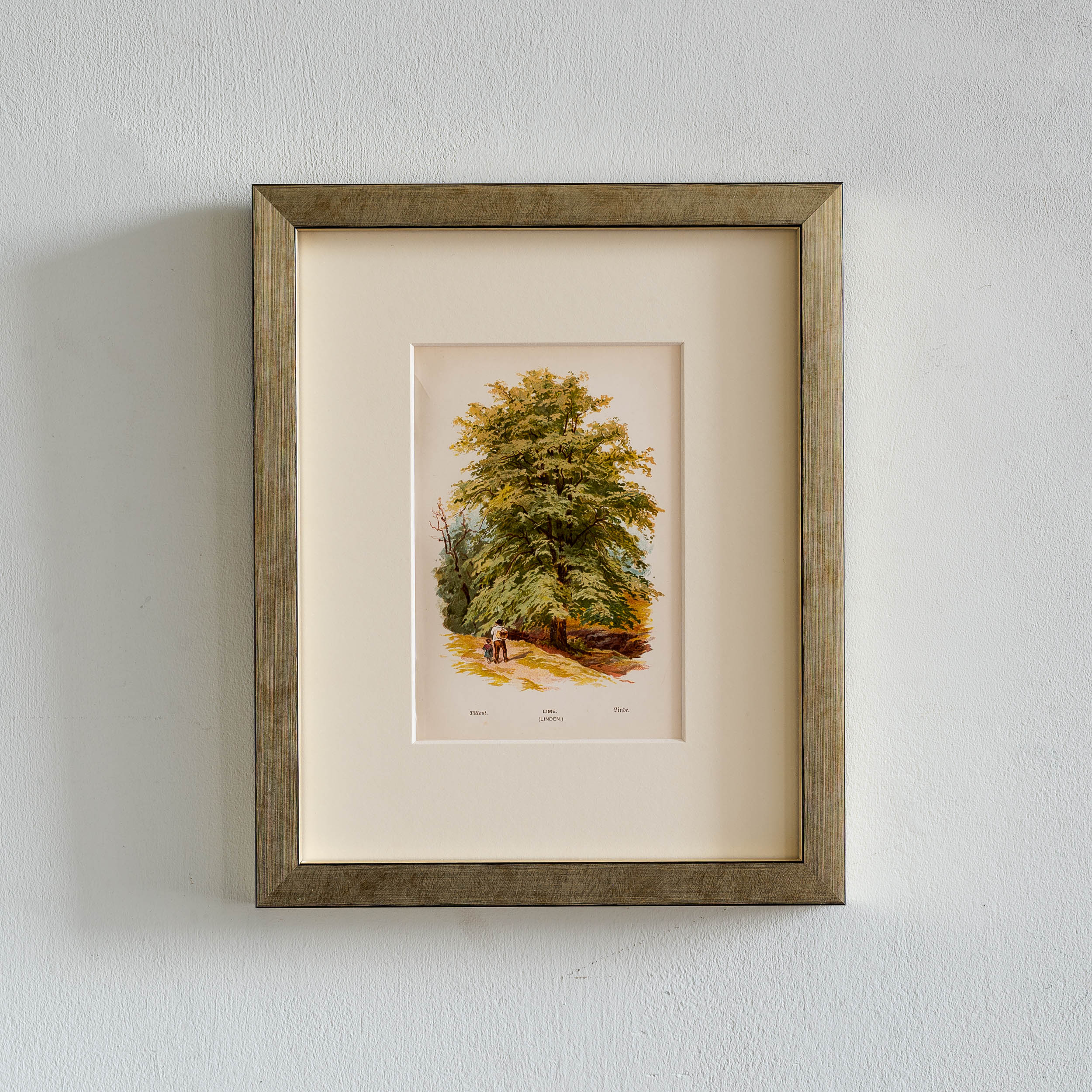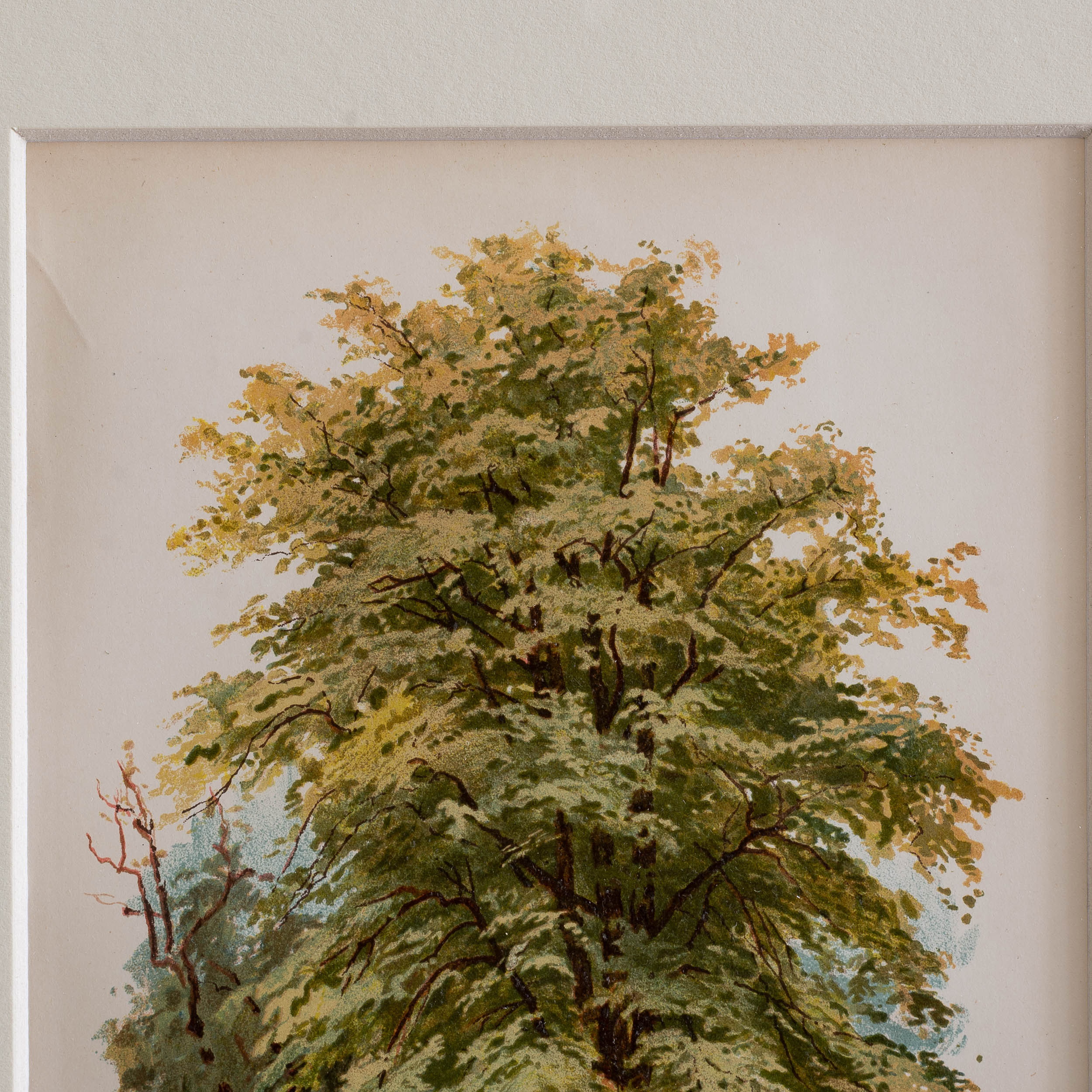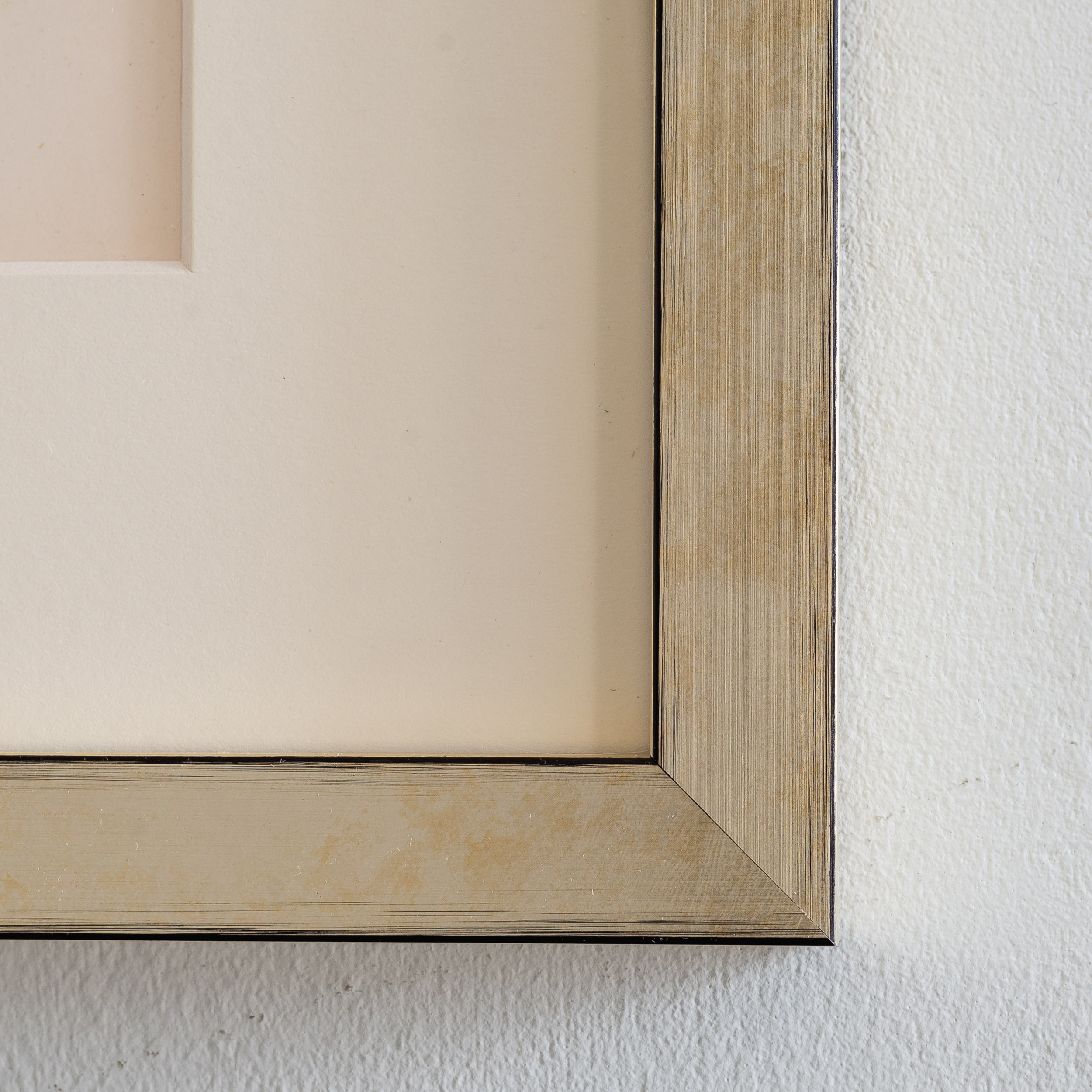Archived Stock - This item is no longer available
Nineteenth century arboreal prints,
European trees published c1880. Mounted in cream framed in pale gold.
'Lime'
SOLD OUT
Out of stock
Chromolithography is based on the principle that oil and water do not mix. The process involves the artist drawing the design directly onto a highly polished lithographic stone using a greasy, acid resistant pigment. When the stone is then placed in a weak acid the uncoloured areas are etched by the acid, leaving the painted areas intact and ready to be used as a printing surface. For multi-colour printing, several stones would be prepared, one for each colour. Gradations of colour were achieved by applying hundreds of tiny dots of each colour on their respective stones, so that when each stone was printed onto the paper the resultant area would be printed with multiple dots of different colours which to the human eye would appear realistic. But if a magnifying glass is used to examine the printed areas, the presence of irregular, multicoloured dots will indicate that the card was printed by the chromolithographic method.
Recently Viewed Items
-

Porters Hall, by Hubert John Williams.
£395Porters Hall, by Hubert John Williams.
Hubert John Williams (1905-1989). Portrait, landscape and architectural painter, etcher and illustrator. Williams was born in Beckenham, Kent in 1905 and later studied at the Royal Academy Schools where he was awarded the Landseer Scholarship for 1928. He also attended the St Martins School of Art and the L.C.C. Schools. Between 1926 and 1939 he exhibited at the Royal Academy, Royal Scottish Academy, Royal Institute of Painters in Oil, and the New English Art Club amongst others. During WWII he worked as a cartographer in the War Office, then as commercial illustrator from 1946 specialising in children's education. His work can be found in many public collections including The Imperial War Museum and Museum of London.£395



